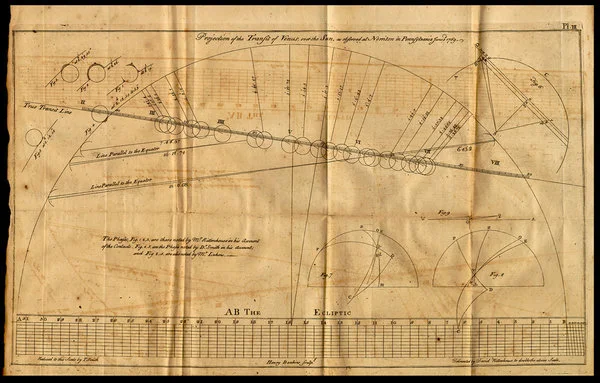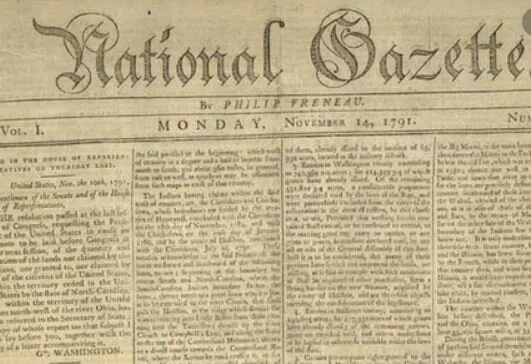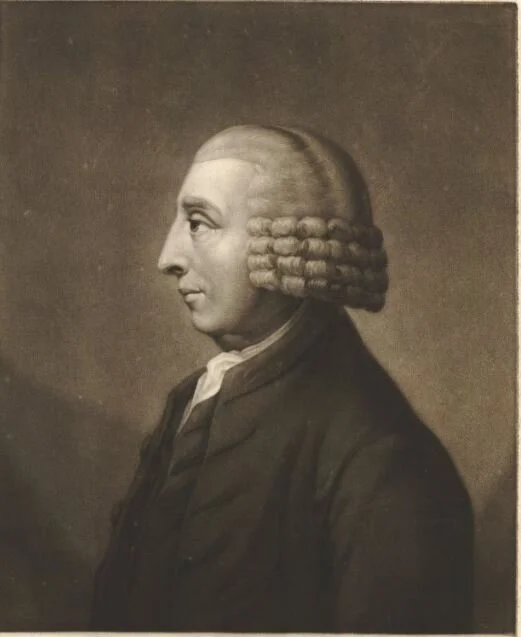The Revolutionary Astronomy of David Rittenhouse
David Rittenhouse was one of the leading scientists during the American Founding.
Rittenhouse specialized in astronomy during the peak of the Enlightenment.
Among Luminaries
When Thomas Jefferson wrote his Notes on the State of Virginia, he dedicated a portion of it to argue that men born in North America could stand intellectually on the same ground as men of Europe.
To prove his point, Jefferson listed three names.
David Rittenhouse.
David Rittenhouse
When discussing scientists associated with the American Revolution, Ben Franklin is generally the first person to come to mind.
Though several decades younger than Dr. Franklin, David Rittenhouse was one of his contemporaries and is arguably the only person to outshine Benjamin in his mastery of the sciences.
Rittenhouse was from a moderately wealthy family and was predominantly self taught, having learned from experience with tools and books he had inherited from an uncle.
By his 30’s, however, David had become well known on both sides of the Atlantic for his scientific achievements.
Orrery
Of Rittenhouse’s most famous works, his two orreries are perhaps the most fascinating.
An orrery is a scale model of the solar system, whose calculations were still uncertain at the time. Considering the limitations these devices are surprisingly accurate.
The first orrery David made for the College of New Jersey (now Princeton) who granted the self taught genius an honorary degree for his services.
Of course, his friends at the College of Philadelphia (now the University of Pennsylvania) were jealous, as they had previously granted him an honorary degree, and they requested one of their own. David compiled, being compensated handsomely for his efforts.
Venus
In 1769, the planet Venus journeyed across the Sun.
Scientists from around the world pulled out their telescopes to record what they saw, after which, they shared their notes and attempted to calculate that planet’s size.
David Rittenhouse was put in charge of the observations in Pennsylvania. He set up three observatories with twenty-two telescopes and recruited a team of volunteers to assist him in the task.
Apparently, Rittenhouse was so excited for the event that he fainted half way through. When he regained consciousness, David jumped back up and grabbed another telescope.
The combination of the findings from the Rittenhouse team with that of others around the world (including Captain James Cook all the way in Tahiti) led to an impressive calculation of Venus’ size that is only 3% off from what we know it as today.
More Than Astronomy
This is just a small sample of the work David Rittenhouse was able to accomplish as a scientist in his lifetime.
His other work, including educating other scientists and building one of the first diffraction gratings (for studying the light spectrum) deserve entire essays to themselves.
Rittenhouse was also, in his free time, an important American Founder which will be covered in tomorrow’s article.
Tomorrow’s article will be all about David’s service as an American Founder.
If you want to read about that as well as every other day’s Founder, make sure you subscribe to my daily newsletter here:
Want to learn more about David Rittenhouse?
‘Astronomer Patriot’ was written in 1946 so it is not yet in the public domain but is extremely interesting and goes into depth on all of Rittenhouse’s activities.
Pick up a copy through the Amazon affiliate link below (you’ll support this site, but don’t worry, Amazon pays me while your price stays the same).





